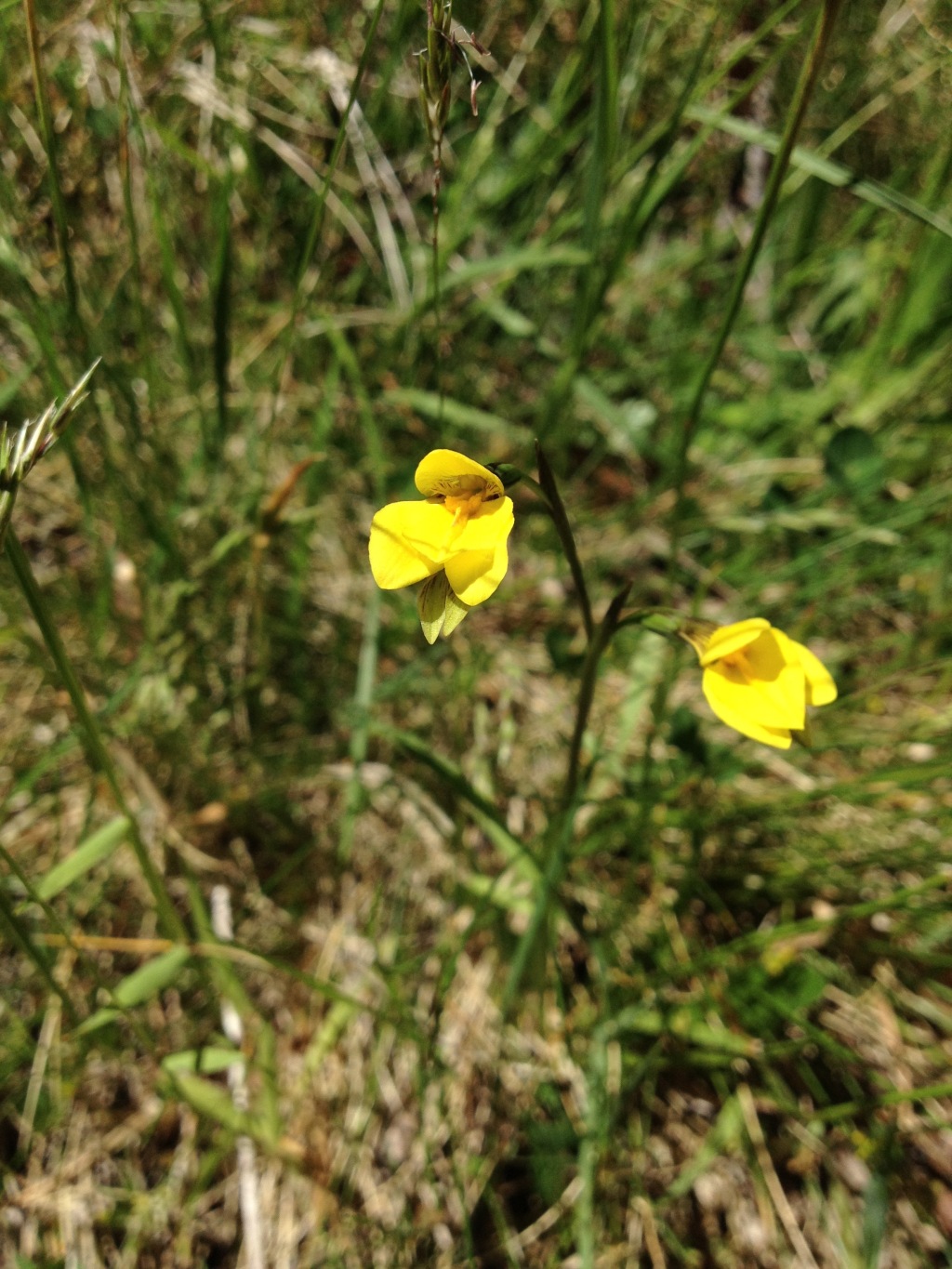Diuris subalpina
D.L.JonesFlowering plant slender, 6–15 cm tall. Leaves usually 2, linear, 5–15 cm long, basal. Flowers 1 or 2, nodding, mostly pale yellow with an orange labellum and dark striations on base of dorsal sepal; pedicel (excluding ovary) 2–4 cm long, slender, partly enclosed within bract; dorsal sepal porrect basally then obliquely erect, ovate, 7–10 mm long, shorter than other perianth parts; lateral sepals obliquely deflexed, usually parallel, linear-oblanceolate, 15–20 mm long, brownish; petals drooping, 11–17 mm long, claw brownish, lamina narrow-elliptic, yellow. Labellum obliquely deflexed, yellow, 14–16 mm long, 3-lobed; lateral lobes tiny, triangular, more or less entire; mid-lobe almost flat, c. 6 times as long as the lateral lobes, ovate to broadly ovate, long-clawed at base, with 2 widely separated, pubescent, longitudinal ridges extending shortly beyond base, a single, less distinct ridge continuing almost to labellum apex. Column wings c. as long as the anther. Flowers Oct.–Dec.
DunT, MonT. Also NSW, SCT. Often grows in montane grassland, alpine meadows and moorland in moist clay loams and peaty loams.
Distinguished from Diuris chryseopsis by its generally later flowering, montane to alpine habitat and slightly smaller flowers. Similar to D. monticola but that species has 5–9 leaves in a basal tuft, up to 4 porrect flowers, larger lateral lobes and a shorter basal claw on the labellum.
 Spinning
Spinning

